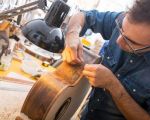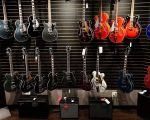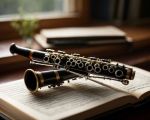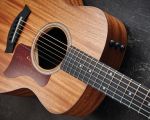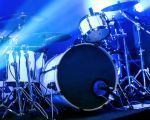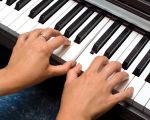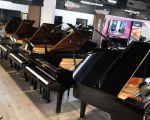
How to Choose the Best Bass Amp for Gigs in the USA
Choosing the best bass amp for gigs isn't just about volume—it's about tone, reliability, portability, and how your gear interacts with your personal playing style. I’ve spent over a decade gigging across bars, clubs, festivals, and even outdoor street events across the States, and I’ve learned (often the hard way) what really matters when it comes to picking the right amp.
1. Understand the Type of Gigs You’re Playing
Before you even browse amps, take a good look at the kind of gigs you’re doing. I used to haul around a 100-pound tube amp for small café shows until I realized I was over-preparing for venues that barely mic the drums, let alone the bass.
If you’re mostly playing small venues or coffee shops, a combo amp with around 100 to 200 watts might be more than enough. But for outdoor shows, festivals, or larger clubs where your sound needs to fill space or cut through a full band mix, you’ll want something stronger—preferably a head and cab setup with at least 300–500 watts of power.
2. Combo vs. Head and Cabinet: Which Is Right for You?
Early on, I was a die-hard fan of combo amps. They're portable, easy to set up, and usually budget-friendly. My first gig amp was a Gallien-Krueger MB112—compact, powerful, and it fit in the trunk of my old Civic. But when I started playing larger venues with a rock trio, I upgraded to a head and cab rig—a Mesa Boogie head paired with a 4x10 cab. The difference in tone depth and projection was unreal.
Combo amps are great for practice, rehearsal, and smaller gigs. They’re an all-in-one solution. Head and cabinet setups are modular, which gives you more flexibility in tone and stage power—but also means more gear to carry and more potential points of failure.
3. Wattage and Power Handling: Don’t Be Fooled by Numbers
More watts don’t always mean louder sound. I learned that a well-designed 200W amp can sound bigger and cleaner than a poorly made 500W one. Look for RMS wattage rather than peak—RMS is the true continuous output. Also, match your amp’s power output with your cab’s power handling to avoid damage or poor performance.
Most of my club gigs were done with a 300W amp pushing a 4-ohm 2x12 cab. That combo gave me punch, clarity, and just the right breakup when I pushed it.
4. Solid State vs. Tube vs. Hybrid Amps
I’ve owned all three types. Solid-state amps are reliable, lightweight, and consistent. Great for touring and long nights on the road. Tube amps deliver that rich, warm, growling tone that just sings in rock, blues, and soul settings—but they’re heavy, fragile, and need regular maintenance.
Hybrid amps try to blend the best of both worlds. My Ampeg SVT-3 Pro had a tube preamp and solid-state power section, and it gave me warmth with consistency. If you're chasing tone but also want reliability, hybrids are a strong middle ground.
5. Consider EQ and Tone Shaping Features
One gigging nightmare I had was showing up at a club with poor stage acoustics. My amp didn’t have a parametric mid control, and I couldn’t cut through the muddy mix. Since then, I never buy an amp without a 3-band EQ at minimum. Sweepable mids are a godsend for tailoring your tone to different rooms.
Look for features like onboard compression, contour switches, and DI outputs. An XLR direct out lets you go straight into the house PA, which is essential for larger gigs or soundcheck-free events.
6. Portability and Durability
If you’re gigging regularly, your amp needs to survive being tossed into vans, dropped off curbs, and powered through less-than-ideal electricity setups. I learned to prioritize durable builds—metal chassis, corner protectors, and quality jacks.
Class D amps are a great option if you’re trying to reduce weight. I gigged a Markbass Little Mark III for over four years. It weighed less than seven pounds and never let me down.
7. Don’t Ignore Cab Pairings
The cab is half the sound. I once paired a high-end amp head with a budget cab and was disappointed with the weak low-end and harsh highs. Make sure your cab has the frequency response and speaker size that matches your genre and tone goals.
2x10s are punchy and tight, great for funk and jazz. 1x15s give you that deep low-end thump. 4x10s offer a good balance of clarity and depth. Mixing cabs (like a 1x15 with a 2x10) can work too—but be cautious with ohm ratings and power handling.
8. Budget Smart—But Don’t Go Cheap on the Essentials
I get it—bass amps can get pricey fast. But buying too cheap often means replacing gear sooner. If you’re tight on funds, go for quality used gear. Sites like Reverb or local stores often have gems. I scored my first Hartke cab secondhand, and it lasted me nearly a decade.
Put your money where it matters: power, tone shaping, and durability. Fancy LED lights and app integration can be cool but don’t help your tone at a loud venue.
9. Real Gig Story: The Day My Amp Saved the Show
One night in Austin, our drummer’s kit didn’t make it due to a van issue, and we had to do an acoustic-style show in a big club space. I plugged my bass into my Aguilar Tone Hammer 500, ran the DI into the PA, and used a 1x12 cab behind me for stage fill. It ended up being one of our best sets—rich bass tone, clear articulation, and the audience actually loved the stripped-down vibe. That night reinforced how important a versatile, reliable amp can be in unpredictable situations.
10. Test Your Amp in the Right Environment
Always test amps with your bass, your pedals, and ideally, in a room that replicates gig conditions. Music stores are fine, but I’ve made mistakes buying an amp that sounded great solo and awful in a band mix. If you can, borrow or rent before buying.
Find Your Perfect Match with Beat Trigger
There’s no universal "best bass amp"—just the best one for your style, your venues, and your expectations. At Beat Trigger, we help gigging musicians find gear that works for their real-world needs. Whether you’re a touring pro or a weekend warrior, having the right amp can transform your sound—and your experience on stage.


